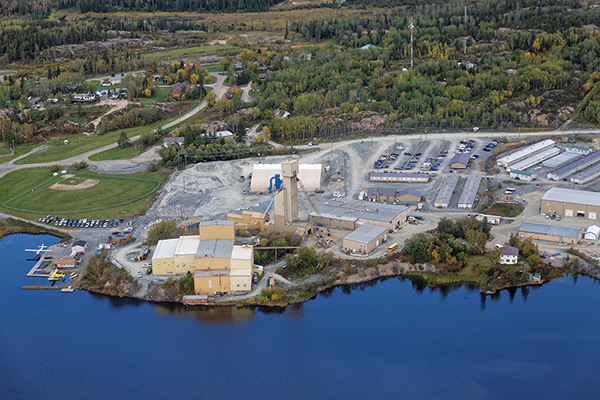B.C. through a lens
British Columbia is marketed globally as “Super, Natural British Columbia” and over the past nine years, the Association for Mineral Exploration British Columbia (AME BC) has held an annual photo contest to demonstrate that mineral exploration and the province’s stunning scenery are not mutually exclusive.
This year, entrants focused their lenses on some of the major projects and areas with mineral potential in the province. Credit is extended to the government of BC’s regional geologists for information on the projects; their comprehensive review of 2012 activities, Exploration and Mining in British Columbia, will be released at Mineral Exploration Roundup in Vancouver later this month.
In the meantime, here are the winners from the ninth annual (AME BC) photo contest:
1) First Place, Overall
Grizzly bear grazing near Porcupine Glacier, Northwestern BC. Photo credit: James Newby, Knight Piésold.
Porcupine Glacier is in the Golden Triangle, an area in northwestern British Columbia that features over 935 mineral occurrences and 67 documented properties in the resource category. Bears are a common sight during exploration in BC; to prepare yourself the video Staying Safe in Bear Country is highly recommended.
2) First Place, Animals, Minerals, Harmony
Two bull moose wade through Kadah Lake, Toodoggone region, north-central BC. Photo credit: Brian Kornichuk.
This photo was taken near the JD epithermal gold-silver deposit and copper-gold porphyry property in the Toodoggone region of north-central British Columbia. Tower Resources’s 2012 drilling program resulted in gold-silver mineralized intervals of up to 31.5 metres wide.
3) First Place, Health and Safety
Jesse Collison conducting site reconnaissance of proposed tailings facility valley at the Aley project. Photo credit: Josie Speed
Visibility in the field is an important aspect of mineral exploration health and safety; the cruiser vest is an important part of a mineral explorer’s personal protective equipment. Taseko Mines Limited has released a resource estimate defining the Aley project as the largest undeveloped niobium-bearing carbonatite deposit in the world.
4) First Place, People at Work
Taking survey notes at Schaft Creek. Photo credit: Stephen Zopf.
The Schaft Creek porphyry deposit owned by Copper Fox Metals has a measured and indicated resource of 7.1 billion pounds copper, 7.4 million ounces gold, 455 million pounds molybdenum and 66.7 million ounces silver.
5) First Place, Exploration Scenery (background photo)
Smoke from the Entiako Lake Fire looming over drilling on the Blackwater project. Photo credit: Lani Horwarth. Up to 18 drills were used at New Gold’s Blackwater project in 2012; drilling included 160,000 metres of drilling in the main grid and 10,000 metres at the Capoose prospect. A preliminary economic assessment proposed a 60,000 tonne-per-day operation producing an average of 507,000 ounces gold and 2,039,000 ounces silver for an initial 15 years.
Jonathan Buchanan is Director, Communications & Public Affairs, for the Association for Mineral Exploration British Columbia. AME BC welcomes submissions for its 10th annual photo contest; please contact Jonathan Buchanan for details: jbuchanan@amebc.ca.





Comments